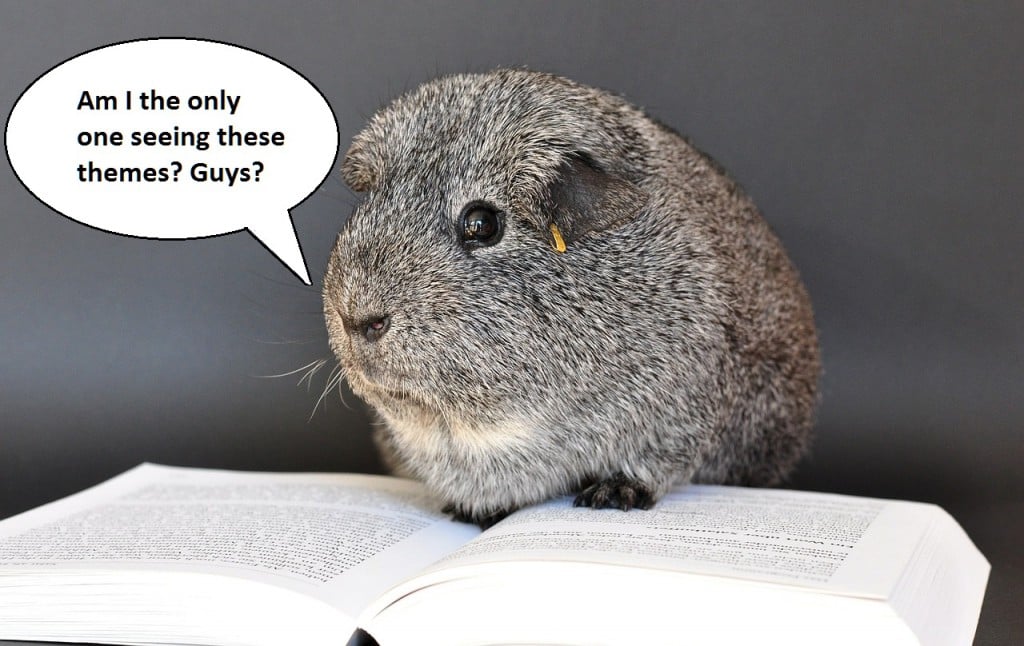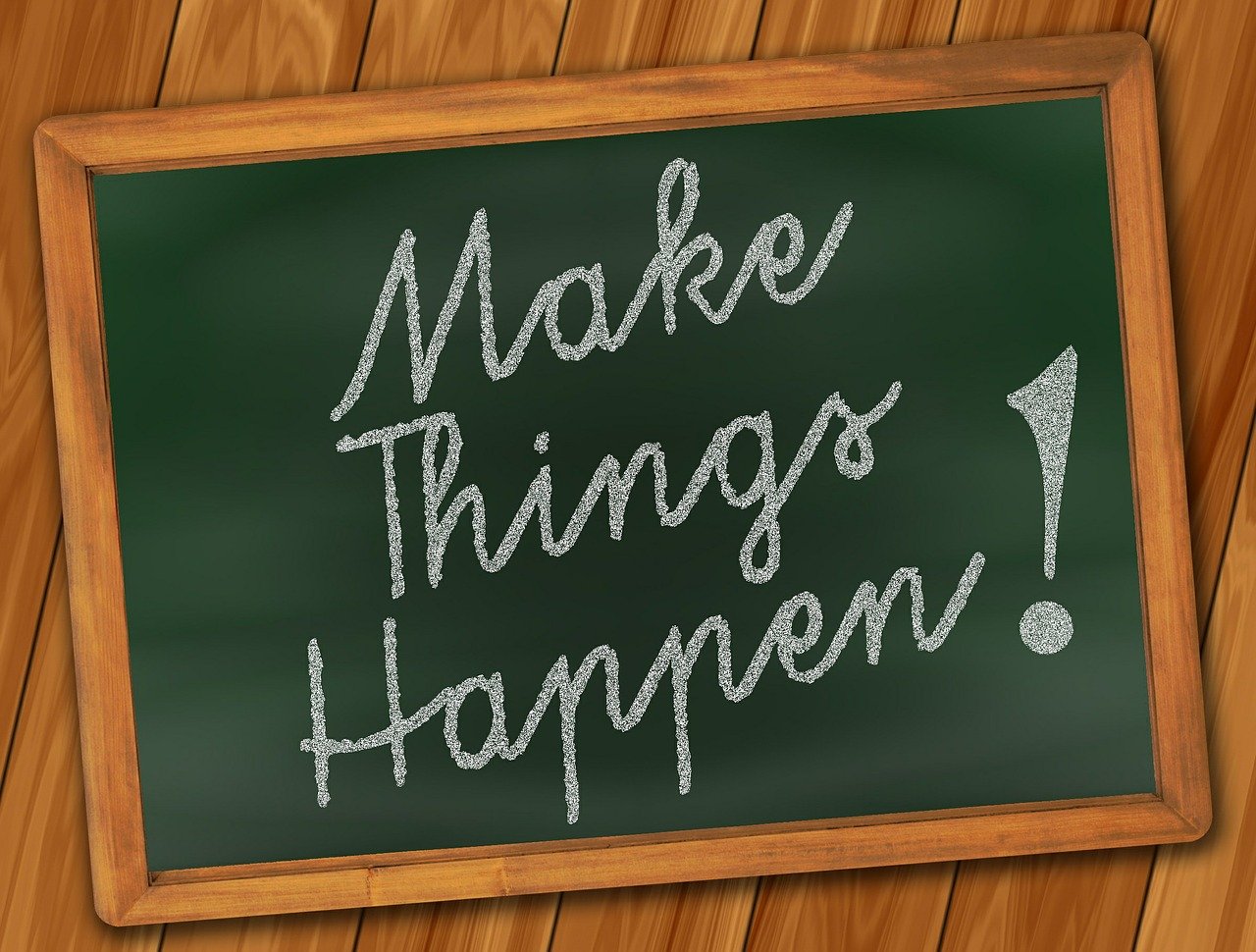Why does that word – analysis – strike fear into the hearts of so many college students, and just what the heck is a literary analysis, anyway?
Analysis is typically the last skill your brain learns, and most students don’t encounter this term until college. But never fear – I’m here to help you conquer your literary analysis essay in this blog post!
A smart literary analysis focuses on how a book or story’s plot, characters, settings, or themes are used by an author. Sometimes, you may want to explore how an author creates meaning through these elements; otherwise, you may want to criticize the author’s methods and their work’s message.

I’ll focus on both approaches in my handy list below, so read on!
Life After Book Reports
Before we dive right into analysis strategies, it’s important to note that analysis is not a summary.
You’ve probably written book reports before, and you know that these are pretty simple because you basically retell a book’s major events to prove you’ve read it.
But analysis requires more from you. Your professor can always read the book you’re analyzing, so you don’t have to recount the plot. Instead, your job in analyzing is to make a claim or thesis about the text and to spend your essay supporting your ideas.
Analysis and argument actually have a lot in common, and if you’ve written argumentative essays, then you can probably write an analysis essay. I’ll break down the process into two phases to help you get started.
Phase One: Hunting and Gathering
In this phase, you should choose the work you want to analyze and then consider your approach. What are your initial ideas? What do you have to say about this book, and how do you plan to support your position? Brainstorm and outline during this phase.
You may be saying, “where do I start?” Glad you asked!
Components of a Smart Literary Analysis #1: Know the Elements
When analyzing literature, you’ll first want to consider the following elements from a different perspective than when you’re just reading a book. True analysis means approaching your text like a detective. Plot, characters, and setting all leave clues to deeper meaning, and your job is to discover them.
Plot
Plot is the pattern of events that make up a story. In your literary analysis, you’ll want to focus on whether or not these events are significant to your claim.
Conflict
Conflict is the struggle between two opposing forces, typically the protagonist and antagonist. Conflicts often follow this traditional form, but sometimes characters experience internal conflict. Or the conflict comes in the form of a natural or supernatural force. The main conflict in a story can often reflect an author’s opinion about the world they live in or the issues of their day.
Characters
Characters are the people or “players” in a story. Characters are great for analysis because they are the ones causing and reacting to the events in a story. Their backgrounds, appearances, beliefs, actions, etc. can all be analyzed. You can often start with characters in an analysis because authors usually express opinions about race, culture, religion, gender, etc. through character representation, whether intentional or not.
Setting
Just like characters, setting can be easily analyzed. As an author may express certain opinions through their characters, what they have to say about places can also be provocative and revealing.
Components of a Smart Literary Analysis #2: Focus on Literary Devices
You can analyze a book’s themes by first brainstorming some ideas and thinking about the impression you get when reading it. Novels are full of symbols and allusions, and most authors have something to say about the world.
In analyzing The Lord of the Rings, you could discuss how Tolkien uses light and dark imagery as symbols of good and evil. “Gandalf the White” is certainly a representation of good, while evil is implied by the “Black Gates of Mordor.” You could continue by focusing on Tolkien’s language used for good or evil characters and settings.
While these terms have different meanings, you can approach them with the same strategy in your analysis essay. If a novel uses allegory or metaphor, then its story represents some real-world event(s) or criticism thereof.
A well-known Christian allegory is C.S. Lewis’ The Chronicles of Narnia series. You could write an analysis essay that argues how Aslan’s journey represents Jesus’s story in the Bible. If you wanted to take this one step further, you could also explore whether or not Lewis’ interpretations could be seen as accurate and why.
Think about metaphor by analyzing how The Lord of the Rings’ plot is a metaphor for the events of World War II. You could also explore whether Tolkien opposes war or glorifies it, depending on how you interpret the novels.
Components of a Smart Literary Analysis #3: Take a Critical Approach
If you’re struggling to come up with your own ideas, then you can definitely fall back on critical approaches or “lenses” through which you can view and analyze your topic. There are quite a few of these, so I’ll just focus on one here as an introduction.
If writing about the first Hunger Games novel by Suzanne Collins, for example, you might apply the feminist critical approach.
That’s a big subject, so you have to start somewhere. The Purdue OWL suggests starting with a list of typical questions. Your answers will help you form your claims.
Here are some of the questions on the OWL’s feminist criticism page:
- What are the power relationships between men and women (or characters assuming male/female roles)?
- How are male and female roles defined?
- What constitutes masculinity and femininity?
Here is my answer to these questions that I could use to get started:
Traditional gender roles are rejected as Katniss Everdeen exhibits more fortitude, confidence, and intelligence than most of her male counterparts, Peeta, in particular. However, the novel still relies on traditional masculine and feminine characteristics as most of the female characters appear ethical, soft-spoken, and passive, whereas most of the male characters are aggressive and less ethical in their actions.
Now I have to start thinking about how to support this stance, just like an argument.
You can apply a similar approach to any of the critical lenses. The most common approaches that students use today are Feminist, Marxist, Post-modern, and Psychoanalytic.
Components of a Smart Literary Analysis #4: Follow the 5 W’s
Who, what, where, when, why/how – think about these when writing your notes and outline:
Who is the author? Does his or her background have any impact on the writing? What links can you draw between the author’s life and those of the characters in the story?
What is happening in the story? What events are significant and why?
Where does the story take place, and why is this important to your analysis?
When is the story set? How does this time period affect your interpretation? Think about historical context as this can be very important.
Why/how do you justify your claims? What evidence from the text will you use?
Components of a Smart Literary Analysis #5: Making an Assertion vs. Using an Argument and Evidence
An assertion makes a claim and can work as a topic sentence, but an argument is more complex and complete. An argument provides your claim but also supports it.
Assertion:
Harry Potter’s lightning-shaped forehead scar represents a badge of achievement for thwarting Voldemort.
Argument:
Harry Potter’s lightning-shaped forehead scar represents a hero’s badge of achievement for thwarting Voldemort as well as his fame and status in the Wizarding world. Ron Weasley confirms this notion early in Sorcerer’s Stone when treating the scar with reverence on the Hogwarts Express. In the same scene, Hermione Granger immediately recognizes Harry because of his scar and only remarks about a smudge on Ron’s face, revealing the disparity between supposedly “normal” characters and how Harry’s scar and its history define him as the special hero character.
See the difference? In an argumentative paragraph, you offer a specific assertion/claim, evidence to support it, and commentary to show how that evidence is relevant.
Other Evidence
Double-check with your professor about her expectations. Typically, you’ll use summary, paraphrasing, and direct quotes from the literature you’re analyzing as evidence. Often, you’ll only have to focus on your own ideas and simply support your claims with logic and evidence from your text. However, you may be expected to use other sources, such as scholarly publications, to support your analysis. If so, visit your university library or its website to start researching your topic.
Phase Two: Writing
Okay – now that you’ve collected information about your topic and brainstormed some ideas for your approach, let’s move on to actually writing the literary analysis!
Components of a Smart Literary Analysis #6: MLA Format
Most literary analysis essays will typically appear in MLA format, so you’ll want to make sure you get this step right. Here is a great link to a sample MLA paper that shows you the ropes.
You may also be expected to cite the book or story you’re analyzing in MLA. You can use an online tool, such as Easybib, to create your citations, but be sure to double-check these for accuracy!
Components of a Smart Literary Analysis #7: Academic Voice
Walk like me; talk like me. To write academically, train your “voice” to be:
- Skeptical, not cynical
- Confident, not cocky
- Logical, not biased
- Critical, but fair
- Concise, not wordy
I can’t stress this last one enough. You are smart, so don’t try too hard to sound smart. Students often make this mistake and end up with bloated and pompous prose, which is when professors like to unload a lot of ink from their grading pens!
You’ll also want to avoid the dreaded “I factor” of first-person writing. For a successful literary analysis essay, third-person writing is the way to go!
Components of a Smart Literary Analysis #8: Essay Organization
Writing your rough draft:
Intro and Body and Conclusion and Bears, oh my!
Okay, so there are no bears, but all good essays are well organized, and a literary analysis is no exception! You may already know the basics, but let’s cover the specifics:
Introduction
The introduction needs three things to be successful: an interesting hook, background on your topic, and a strong thesis that makes a clear analytical claim.
Body
This section will make up the bulk of your paper. Each body paragraph will work to support your thesis. Recall the assertion vs. argument section from above – an analytical paragraph should include the following:
- Your assertion or “sub-claim” that is relevant to your thesis.
- Evidence from the text that can support the assertion.
- A logical evaluation of that evidence – show the reader how the evidence supports your assertion.
Conclusion
The conclusion is your final paragraph. Its job is to recap the main ideas in your essay and reassert your thesis. No new information should appear in your conclusion, so make sure you’ve wrapped up your analysis before you get to this point!
Putting Theory Into Practice
There are many ways to approach a literary analysis, and I hope this post gives you a “leg-up” in starting your own. Whether you’re coming up with your own theme-based approach or you decide to use a critical approach, so long as you take your time and brainstorm, take notes, and outline effectively, you should be off to a good start!
Let’s review. When writing a smart literary analysis, you should focus on:
- Starting with a thesis or claim
- The 5 W’s
- Argumentative paragraphs
- Using evidence to support your assertions
- Using MLA format
- Practicing academic voice
- Strong organization – Intro, Body, and Conclusion
And when you’ve done all that, Kibin will be standing by to proofread your work!





